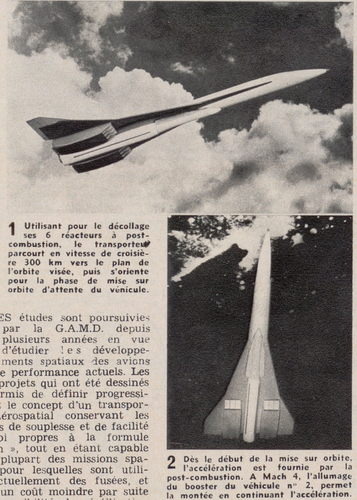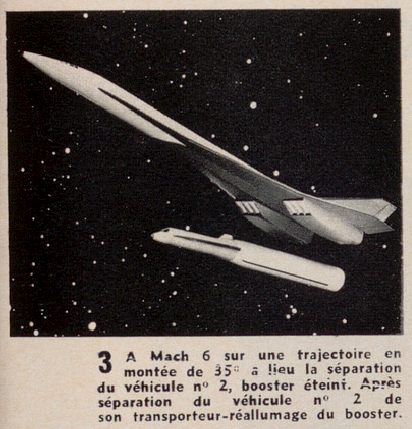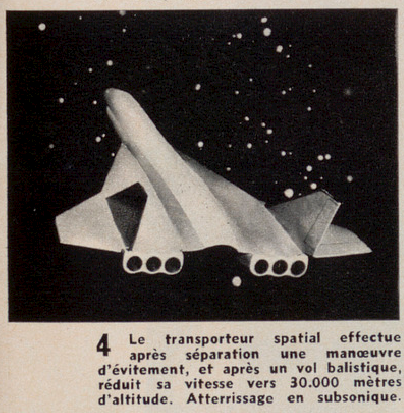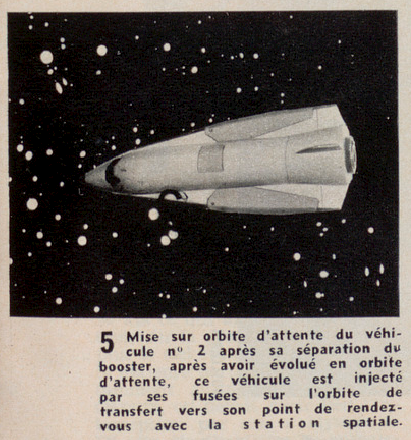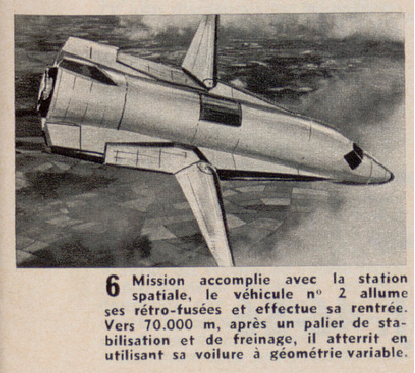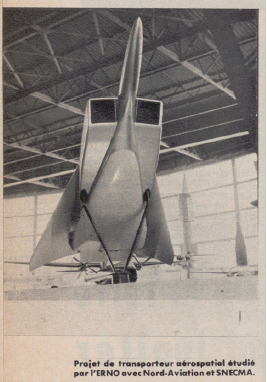You are using an out of date browser. It may not display this or other websites correctly.
You should upgrade or use an alternative browser.
You should upgrade or use an alternative browser.
French TSTO studies of the 60's
- Thread starter Archibald
- Start date
Now that swing wing design….we have seen designs shed tanks right. Thanks that when full of fluid could not possibly hold their own weight up right? And we don’t want ice getting on that RCC right?From Aviation magazine 1965.
So you don’t.
The thing launches….the RCC are flaps nowhere near anything. Tanks and engines slide out of the wing that’s folded flat against the rocket. Ice slides right off the wing. When safe, RCC folds back along the wings. Re-enter…deploy as unit.
Now that swing wing design….we have seen designs shed tanks right. Thanks that when full of fluid could not possibly hold their own weight up right? And we don’t want ice getting on that RCC right?From Aviation magazine 1965.
So you don’t.
The thing launches….the RCC are flaps nowhere near anything. Tanks and engines slide out of the wing that’s folded flat against the rocket. Ice slides right off the wing. When safe, RCC folds back along the wings. Re-enter…deploy as unit.
Well part of the "problem" is the TPS is right there along the outside edge of the REST of the vehicle as well so it can't easily be 'shadowed' from debris. I mean that's it's JOB after all to be exposed to ward off the heat.
Second part is that 'swing-wing' designs tend to be heavy as a general rule. (You can have somewhat 'lighter' one-off systems that only 'deploy' once and have to be essentially "factory reset" once deployed, much like the Falcon 9 landing legs. But those have their own issues you have to be wary of)
Now you can "get around" this somewhat with something like an 'expendable' TPS system covering the 'wings' before they deploy but that still leaves you with vulnerabilities and now you've got another event (along with wing deployment) to add to the list of 'things-that-might-go-wrong" along with the need to be able to deploy those wings quickly if things go south on the trip UP. So it's very much a 'trade-off' that is a less simple and easy than most people think.
Randy
I was thinking having the whole TPS not attached to tankage at all-but through hinges? No ice. No cold. No flex. Fold along now dry empty tankage and airflow keeps it in place.
That's still the mass of the 'folding' system and another point of failure if it does not deploy properly. You also have to have it rigidly attached to the vehicle since having it decide to 'slide' off one side could have "bad" results
Mind you I'm not totally against a 'deploying' TPS per-se as there's been some interesting work on the matter it's just that (unfortunately) none of the systems tested have actually worked in actual flight yet.
Randy
martinbayer
ACCESS: Top Secret
- Joined
- 6 January 2009
- Messages
- 3,402
- Reaction score
- 3,911
Everyone keep in mind the KISS principle. The STS got a whole lot of things wrong (SRBs and expendable flaking insulation tank tank), but at least the orbiter mostly made it back in one piece, except when solids (NEVER EVER use those on crewed missions) and flaking insulation throwaway tanks (also NEVER EVER use those on crewed missions) "malfunctioned". If you want true reusability, go all the way or not at all.I was thinking having the whole TPS not attached to tankage at all-but through hinges? No ice. No cold. No flex. Fold along now dry empty tankage and airflow keeps it in place.
That's still the mass of the 'folding' system and another point of failure if it does not deploy properly. You also have to have it rigidly attached to the vehicle since having it decide to 'slide' off one side could have "bad" results
Mind you I'm not totally against a 'deploying' TPS per-se as there's been some interesting work on the matter it's just that (unfortunately) none of the systems tested have actually worked in actual flight yet.
Randy
Last edited:
Everyone keep in mind the KISS principle. The STS got a whole lot of things wrong (SRBs and expendable flaking insuation tank tank), but at least the orbiter mostly made it back in one piece, except when solids (NEVER EVER use those on crewed missions) and flaking insulation throwaway tanks (also NEVER EVER use those on crewed missions) "malfunctioned". If you want true reusability, go all the way or not at all.I was thinking having the whole TPS not attached to tankage at all-but through hinges? No ice. No cold. No flex. Fold along now dry empty tankage and airflow keeps it in place.
That's still the mass of the 'folding' system and another point of failure if it does not deploy properly. You also have to have it rigidly attached to the vehicle since having it decide to 'slide' off one side could have "bad" results
Mind you I'm not totally against a 'deploying' TPS per-se as there's been some interesting work on the matter it's just that (unfortunately) none of the systems tested have actually worked in actual flight yet.
Randy
"flaking insulation throwaway tanks" is not a generic issue. They are in constant use and it doesn't cause problems. And it isn't the insulation, it is ice that can cause problems most of the time. The STS issue was putting impact sensitive TPS in a debris shedding environment.
not feasible. Loads are too high.Hmm...TPS as fairing/shroud? Above cluster tankage-slides down on rails? All dry by then...petals...all tech inward facing. TPS is the grid fin.
But being honest you'd likely still have some 'ice' issues with a fully reusable system given the use of hydrogen. (Heck Starship/Superheavy is going to have the same issues with liquid methane if we're honest, they are hoping to avoid issues by "stacking" things better but it's likely still going to be a general issue)Everyone keep in mind the KISS principle. The STS got a whole lot of things wrong (SRBs and expendable flaking insulation tank tank), but at least the orbiter mostly made it back in one piece, except when solids (NEVER EVER use those on crewed missions) and flaking insulation throwaway tanks (also NEVER EVER use those on crewed missions) "malfunctioned". If you want true reusability, go all the way or not at all.I was thinking having the whole TPS not attached to tankage at all-but through hinges? No ice. No cold. No flex. Fold along now dry empty tankage and airflow keeps it in place.
That's still the mass of the 'folding' system and another point of failure if it does not deploy properly. You also have to have it rigidly attached to the vehicle since having it decide to 'slide' off one side could have "bad" results
Mind you I'm not totally against a 'deploying' TPS per-se as there's been some interesting work on the matter it's just that (unfortunately) none of the systems tested have actually worked in actual flight yet.
Randy
Heck the Saturn V and Saturn 1/1B "shed" every launch you just didn't have the TPS in the debris zone.
Everyone keep in mind the KISS principle. The STS got a whole lot of things wrong (SRBs and expendable flaking insuation tank tank), but at least the orbiter mostly made it back in one piece, except when solids (NEVER EVER use those on crewed missions) and flaking insulation throwaway tanks (also NEVER EVER use those on crewed missions) "malfunctioned". If you want true reusability, go all the way or not at all.I was thinking having the whole TPS not attached to tankage at all-but through hinges? No ice. No cold. No flex. Fold along now dry empty tankage and airflow keeps it in place.
That's still the mass of the 'folding' system and another point of failure if it does not deploy properly. You also have to have it rigidly attached to the vehicle since having it decide to 'slide' off one side could have "bad" results
Mind you I'm not totally against a 'deploying' TPS per-se as there's been some interesting work on the matter it's just that (unfortunately) none of the systems tested have actually worked in actual flight yet.
Randy
"flaking insulation throwaway tanks" is not a generic issue. They are in constant use and it doesn't cause problems. And it isn't the insulation, it is ice that can cause problems most of the time. The STS issue was putting impact sensitive TPS in a debris shedding environment.
As Byeman notes and I really should read ahead
Randy
martinbayer
ACCESS: Top Secret
- Joined
- 6 January 2009
- Messages
- 3,402
- Reaction score
- 3,911
My apologies for derailing the conversation. I got triggered by the swing wings and went on to an old man rant/tear from there.And this relates to French TSTOs, how ?
Jareel
ACCESS: Secret Space Projects
- Joined
- 25 May 2022
- Messages
- 11
- Reaction score
- 12
I'd like to add another one to the list - a two-stage spaceplane system (orbital spaceplane carried on top of a hypersonic spaceplane) where the first stage used a cluster of Moteur Combiné - motors able to work in air-breathing and rocket modes. It was described in one of the 1989 Flight International issues (but sadly - no link I can provide, as the entire archive of the magazine went offline and the specific file (1989 - 0424.PDF) isn't stored even on the web archive)


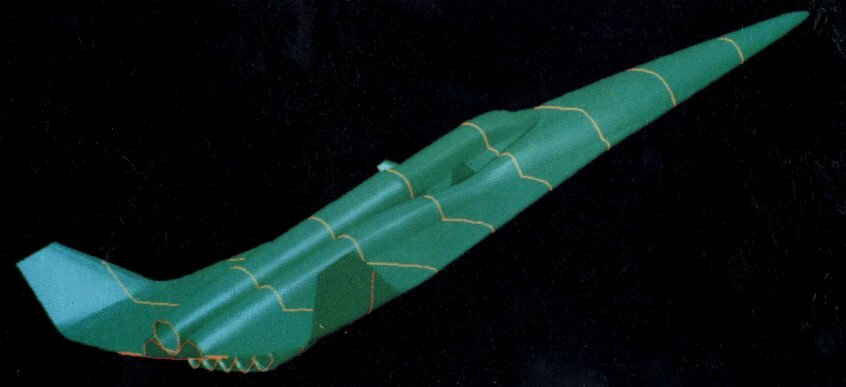
Hi, any chance you could get these in a higher resolution? It's pretty much impossible to read the text or numbersGot this a while back on Ebay...
An updated link: Rev. Phys. Appl. (Paris) 5, 455-465 (1970) DOI: 10.1051/rphysap:0197000503045500 - Utilisation d'un alliage de niobium dans la réalisation d'un véhicule hypersoniquePerez, Syre, Billon, Pichoir et Guyot (Tréfimétaux GP, Nord-Aviation, Onera
"Utilisation d'un alliage de niobium dans la réalisation d'un véhicule hypersonique"
Rev. Phys. Appl. (Paris) 5, 455-465 (1970)
link: http://rphysap.journaldephysique.or..._1970__5_3_455_0/rphysap_1970__5_3_455_0.html
Last edited:
martinbayer
ACCESS: Top Secret
- Joined
- 6 January 2009
- Messages
- 3,402
- Reaction score
- 3,911
That's the Dassault Star-H concept.
View: https://www.reddit.com/r/Giscardpunk/comments/r11u3p/dassault_starh_un_transporteur_spatial_capable/
Dedicated thread is at https://www.secretprojects.co.uk/threads/dassault-star-h-aerospace-plane.3232/.
Dedicated thread is at https://www.secretprojects.co.uk/threads/dassault-star-h-aerospace-plane.3232/.
Last edited:
In case you wonder, Giscard (Valery, Giscard d'Estaing) was the french president 1974-81. As for George Marchais he was first secretary of the french communist party at the same period.Giscard punk
Bring back Marchais
And Thierry Le Luron (think of a french Andy Kauffman: comic genius, same era, same tragic fate, died too young) imited Marchais to near perfection. You don't even need to understand french to grasp the caricature...
- Joined
- 12 November 2021
- Messages
- 43
- Reaction score
- 88
Star Raker/Mini? Well, the bigger would be ten…Well it also depends if the design is realistic or not!
Turboramjets are complex, heavy and expensive, and even with 6 of them the airbreathing first-stage top speed is "only" mach 6.
At such "low" speed you still need expendable upper stages to reach orbit...
- Joined
- 13 August 2007
- Messages
- 8,464
- Reaction score
- 11,066
So far i remember was Dassault Star-H, a french counter design to German Saenger II
Similar threads
-
Early European earth observation satellites projects.
- Started by TheKutKu
- Replies: 1
-
List of reference books by period or manufacturer: French aircraft
- Started by c460
- Replies: 35
-
PAH-2: alternatives to and evolution of the Tiger attack helicopter
- Started by overscan (PaulMM)
- Replies: 55

